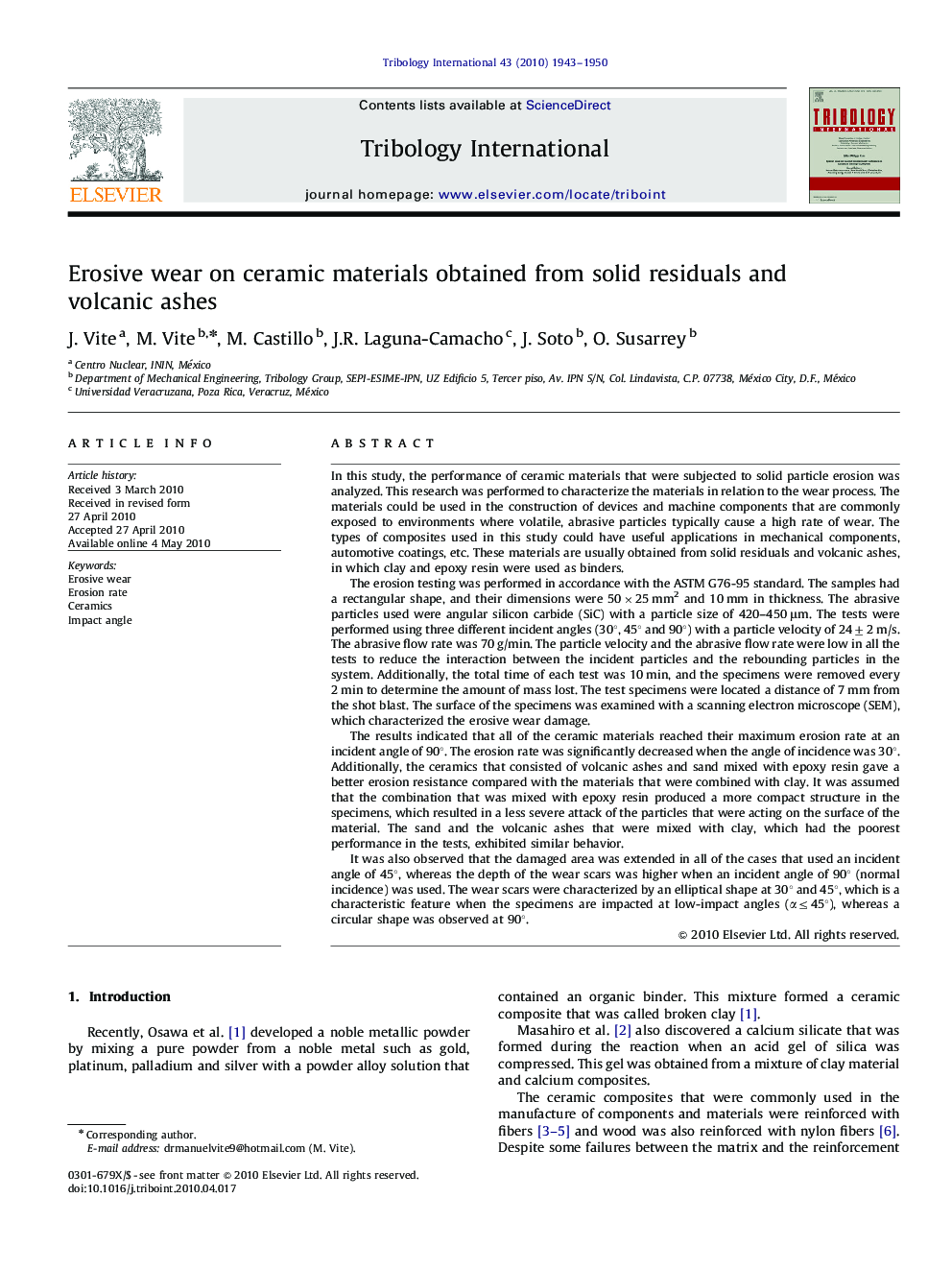| کد مقاله | کد نشریه | سال انتشار | مقاله انگلیسی | نسخه تمام متن |
|---|---|---|---|---|
| 615643 | 881455 | 2010 | 8 صفحه PDF | دانلود رایگان |

In this study, the performance of ceramic materials that were subjected to solid particle erosion was analyzed. This research was performed to characterize the materials in relation to the wear process. The materials could be used in the construction of devices and machine components that are commonly exposed to environments where volatile, abrasive particles typically cause a high rate of wear. The types of composites used in this study could have useful applications in mechanical components, automotive coatings, etc. These materials are usually obtained from solid residuals and volcanic ashes, in which clay and epoxy resin were used as binders.The erosion testing was performed in accordance with the ASTM G76-95 standard. The samples had a rectangular shape, and their dimensions were 50×25 mm2 and 10 mm in thickness. The abrasive particles used were angular silicon carbide (SiC) with a particle size of 420–450 μm. The tests were performed using three different incident angles (30°, 45° and 90°) with a particle velocity of 24±2 m/s. The abrasive flow rate was 70 g/min. The particle velocity and the abrasive flow rate were low in all the tests to reduce the interaction between the incident particles and the rebounding particles in the system. Additionally, the total time of each test was 10 min, and the specimens were removed every 2 min to determine the amount of mass lost. The test specimens were located a distance of 7 mm from the shot blast. The surface of the specimens was examined with a scanning electron microscope (SEM), which characterized the erosive wear damage.The results indicated that all of the ceramic materials reached their maximum erosion rate at an incident angle of 90°. The erosion rate was significantly decreased when the angle of incidence was 30°. Additionally, the ceramics that consisted of volcanic ashes and sand mixed with epoxy resin gave a better erosion resistance compared with the materials that were combined with clay. It was assumed that the combination that was mixed with epoxy resin produced a more compact structure in the specimens, which resulted in a less severe attack of the particles that were acting on the surface of the material. The sand and the volcanic ashes that were mixed with clay, which had the poorest performance in the tests, exhibited similar behavior.It was also observed that the damaged area was extended in all of the cases that used an incident angle of 45°, whereas the depth of the wear scars was higher when an incident angle of 90° (normal incidence) was used. The wear scars were characterized by an elliptical shape at 30° and 45°, which is a characteristic feature when the specimens are impacted at low-impact angles (α≤45°), whereas a circular shape was observed at 90°.
Journal: Tribology International - Volume 43, Issue 10, October 2010, Pages 1943–1950